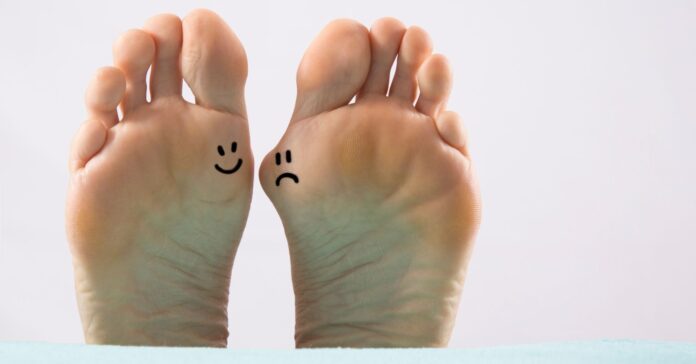Bunions, those unsightly and often painful bumps that form at the base of the big toe, can be a source of immense discomfort for individuals. Whether you have experienced one yourself or know someone who has, it is no secret that these protrusions can greatly affect a person’s quality of life. In this comprehensive article,with tips from experts at Manly Cove Podiatry we delve into all aspects surrounding bunions – from their causes and symptoms to diagnosing techniques and available treatment options. We specifically focus on surgical solutions as a means to provide long-lasting relief for those suffering from bunion blues. It is our aim to shed light on this common foot condition while offering expert insights on how surgical intervention can effectively address this issue once and for all.
Understanding Bunion Formation: Causes and Risk Factors
Understanding bunion formation involves understanding the causes and risk factors associated with this condition. Bunions usually develop as a result of an imbalance in the foot’s structure, leading to excessive pressure being placed on the big toe joint. This can be caused by several factors such as wearing ill-fitting shoes, genetic predisposition, and certain medical conditions like arthritis or gout.
Some of the risk factors for developing bunions include wearing tight or narrow shoes that squeeze the toes together, high heels that shift body weight onto the front of the feet, and having a family history of bunions. Additionally, individuals with rheumatoid arthritis or other inflammatory joint conditions have an increased likelihood of developing bunions.
By understanding these causes and risk factors associated with bunion formation, individuals can take preventive measures such as choosing appropriate footwear and maintaining a healthy weight. In cases where conservative treatments fail to provide relief from pain and discomforts, surgical solutions may be considered for long-lasting relief from bunions.
Identifying Bunion Symptoms: How to Recognize the Onset
Bunions can cause significant discomfort and affect a person’s quality of life. They are characterized by unsightly bumps that form at the base of the big toe and can be both painful and visually unappealing. This article aims to provide a comprehensive understanding of bunions, covering their causes, symptoms, diagnostic techniques, and available treatment options. We particularly focus on surgical solutions as an effective means to achieve long-lasting relief from bunion-related issues.
Recognizing bunion symptoms is essential for timely diagnosis and appropriate treatment. Common signs include swelling, redness, pain or tenderness at the base of the big toe, difficulty moving the affected toe joint, corns or calluses forming over the bump area, and changes in foot shape. It is important not to ignore these symptoms as early intervention can prevent further complications.
Identifying when a bunion has started to develop is crucial in managing its progression. Early signs may include mild pain during physical activities or discomfort after wearing tight-fitting shoes.
By being aware of these initial indicators, individuals can take proactive steps towards seeking medical attention and exploring suitable treatment methods – including surgical alternatives – for effective relief from bunion-related difficulties.
Diagnostic Tools and Techniques: Assessing the Severity of Bunions
Diagnostic tools and techniques play a crucial role in assessing the severity of bunions. There are a variety of methods used by healthcare professionals to determine the extent of bunion deformities and guide treatment decisions. These may include physical examinations, X-rays, and computerized gait analysis.
During a physical examination, healthcare providers examine the foot for visible signs of bunions such as swelling or redness. They also assess the range of motion, stability, and alignment of the affected joint. X-rays can provide detailed images that help identify any bone abnormalities and measure angles associated with bunion severity.
Computerized gait analysis is another valuable diagnostic tool used to assess how an individual’s feet function while walking or running. By analyzing pressure points on the soles and studying foot mechanics, healthcare professionals can gain insights into abnormal movements or imbalances that may contribute to bunion development.
Accurate assessment using these diagnostic tools allows healthcare providers to determine appropriate treatment options for individuals suffering from bunions, ultimately aiming to improve their quality of life through effective surgical solutions.
Surgical Solutions for Bunions: Exploring Treatment Options
Bunions can have a significant impact on an individual’s quality of life, causing discomfort and pain. In this article, we explore the various treatment options available for bunions, with a specific focus on surgical solutions. Surgical procedures can provide long-lasting relief from the symptoms associated with bunions.
From understanding the causes and symptoms of bunions to diagnosing techniques used by medical professionals, this comprehensive article covers all aspects related to these unsightly bumps. However, our main emphasis is placed on exploring surgical options as a means of treating bunions effectively. By delving into different surgical techniques and their benefits, readers can gain a better understanding of how surgery can provide lasting relief for those affected by bunions.
Overall, this professional article seeks to educate individuals about the different treatment options available for addressing bunions, highlighting surgical solutions as an effective means to alleviate pain and improve overall quality of life.


